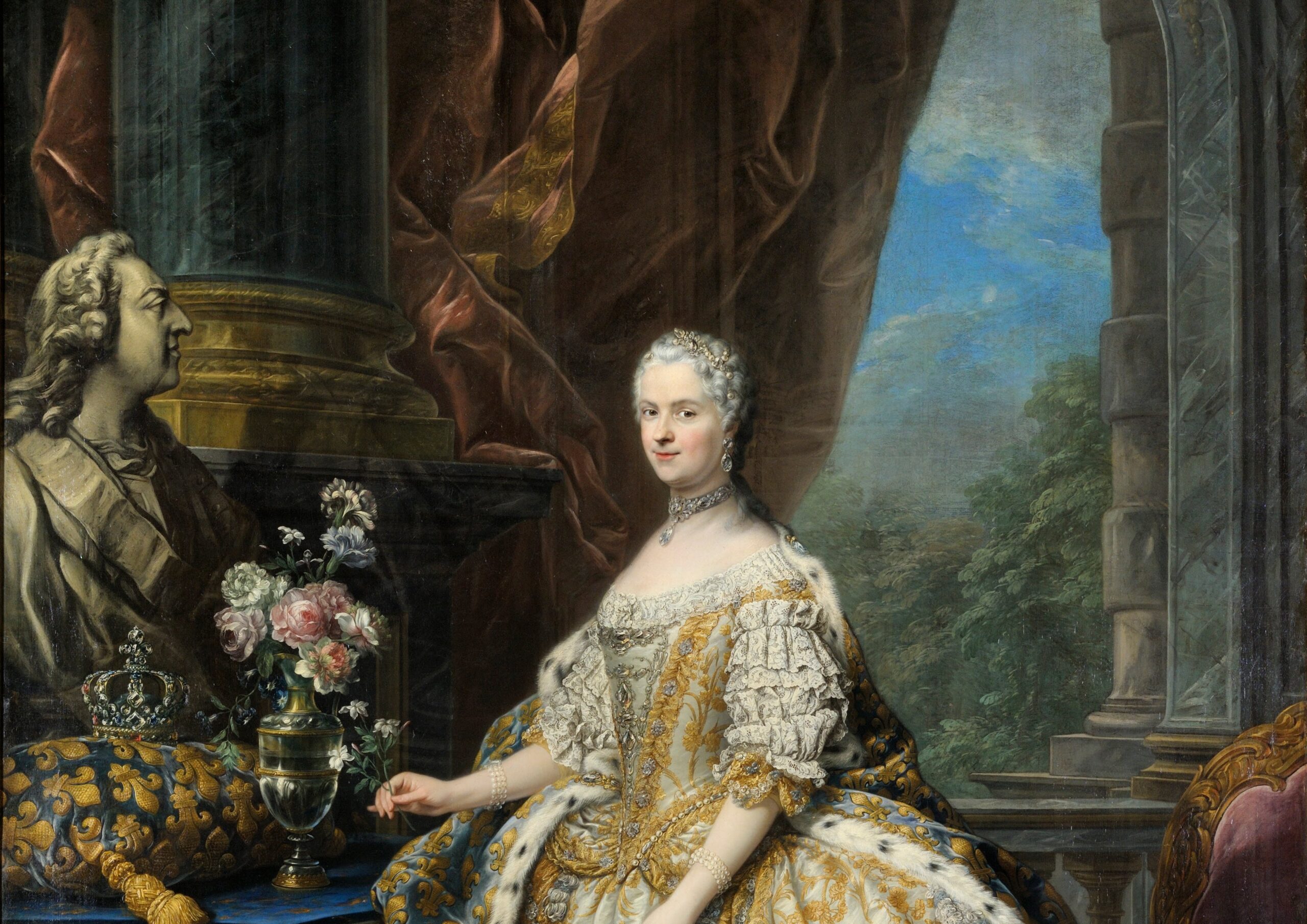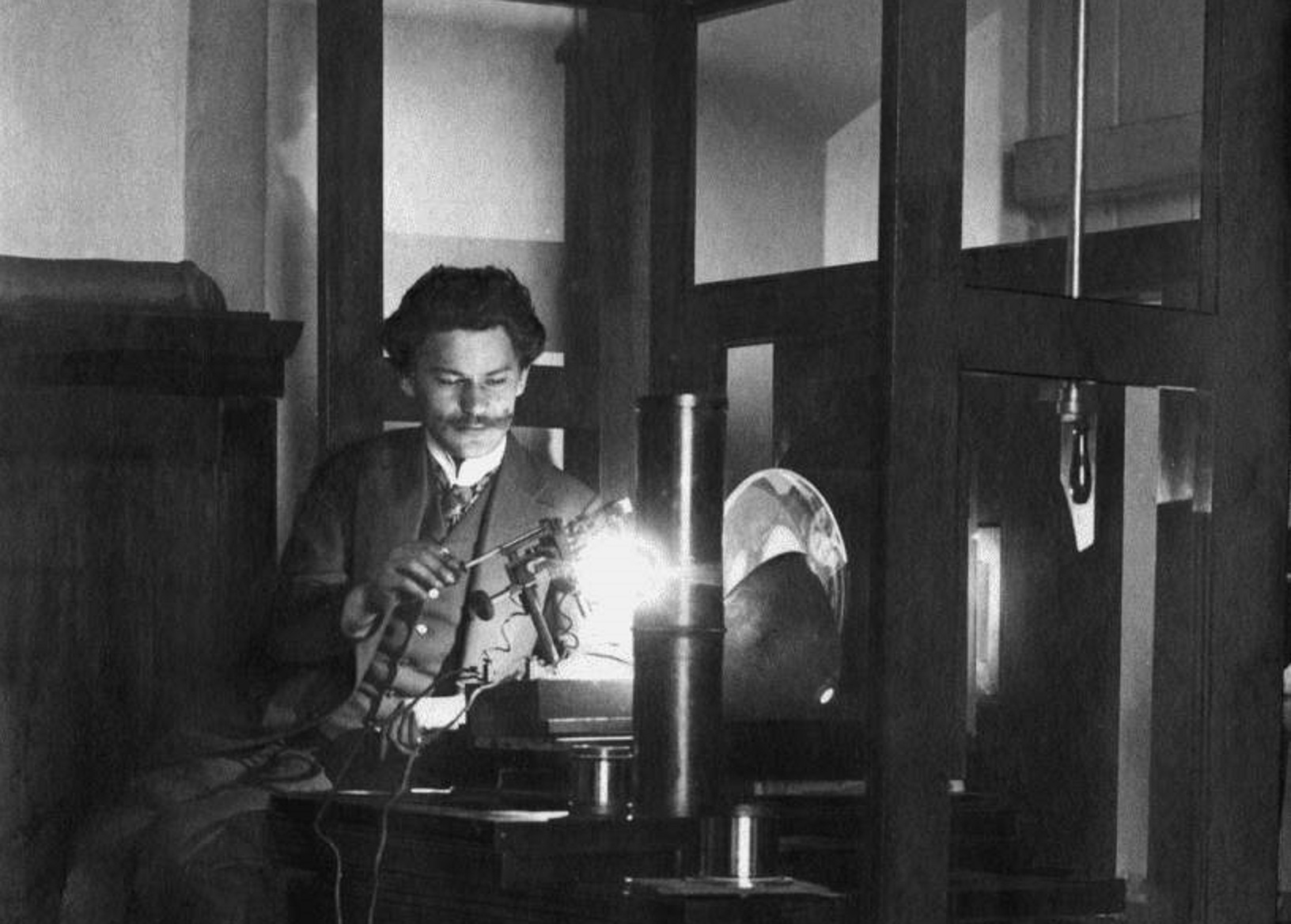It was a type of competition, not to say casting, for a wife for the King of France. The list consisted of one hundred princesses. Brief comments on age, religion and origin were written next to each of the candidates.
by Maciej Forycki
In 1725 Marie Leszczyńska, hailing from a Polish noble family, became Queen of France, to universal astonishment. Two decades earlier, when still an infant, her father Stanisław Leszczyński was elected King of Poland by the nobility of the Polish-Lithuanian Commonwealth. This election took place during the turbulent times of the Great Northern War. However, after Tsar Peter I inflicted a heavy defeat on the Swedish army during the famous Battle of Poltava (1709), Stanisław Leszczyński lost both his crown and vast family fortune. He could not return to the Polish-Lithuanian Commonwealth and, as a royal wanderer, was forced to travel across Europe, taking advantage of the kindness of his protectors, especially Swedish and French. His daughter Marie grew up in his modest court on the German-French border: first in Palatine County of Zweibrücken in Rhineland, and later in Wissenbourg in Alsace.
Meanwhile, the European elite awaited the marriage of the century. Who would Louis XV (1715–1774), direct heir to the illustrious Louis XIV (1643–1715), marry? After over seventy-two years of the reign of the Sun King (the longest-serving European monarch to this day), he was succeeded by his barely five-year-old great-grandson, a sickly child who’d had to grow up in the intrigue-ridden French court. The poor health of Louis XV, who was coming of age, and the political constellations of Versailles, dictated that his marriage should be decided upon quickly. A list of almost a hundred princesses was drawn up, who were suitable for an alliance with Europe’s wealthiest ruling family. The rationale of the state, courtly games, and intrigues determined the least expected choice.

Princess in exile
The future Queen was the younger of two daughters of Stanisław Leszczyński and Katarzyna née Opalińska. She was born on 23 June 1703 in the Silesian town of Trzebnica, on the border between the Habsburg-controlled Kingdom of Bohemia and the Polish-Lithuanian Commonwealth. When she was just over a year old, her father was elected King of Poland, mainly thanks to the patronage of Swedish ruler Charles XII, who, at the time, was spectacularly successful in the Great Northern War (1700– 1721), defeating a coalition comprising of Denmark, Saxony, and Russia under the leadership of Tsar Peter I. But later the situation changed and little Marie had to share the politically and materially difficult life in exile with her royal parents and the small court.
During these years the character of the future Queen of France was forged. A key role in this was played by Stanisław Leszczyński, who was and remained, until the end of his life, an exceptional father for those times: loving, caring, tender, and devoting his time to raising and educating his daughters. After the loss, which was the death of Anna, the elder of the sisters, Stanisław transferred all his strong parental feelings to Marie. This is an important indication of the relations within the Leszczyński family, as well as one of the determinants of Marie’s personality. The future Queen of France had experienced a difficult, nomadic childhood, heavily marked by the insensitivity of her mother and the overprotectiveness of her father. The deep religiousness that she inherited from her parents played a significant role in her life. From her family home she also inherited that combination of simplicity and charm so characteristic of her. Leszczyński took care of his daughter’s good education, developing her various talents, especially musical. Even as Queen, Marie Leszczyńska organised concerts every Sunday at the Salon du Printemps adjacent to the famous Mirror Gallery, which played an important role in the musical life of Versailles.
In the early 1720s, however, nothing seemed to indicate that the impoverished and internationally unknown Polish royal would rule in France. The Leszczyńskis lived modestly in a bourgeois house in Alsace, had considerable debts, and the geopolitical situation in Europe was not conducive to Stanisław’s dreams of returning to the Polish throne.

The hope for a change in the Leszczyński family’s fortunes, a way out of oblivion, poverty, and degradation, was Marie’s good marriage. With her status of Princess, she could aspire to marry into one of the great European families. Entering her twenties, Marie attracted the gaze of men. In provincial aristocratic circles, she captivated with the nimbus of royalty, but also with her beauty, education, linguistic skills (she spoke French, German, Italian and, of course, Polish, and also knew Latin), and her love of music was accompanied by a talent for dancing.
Prominent among the young men competing for her was the commander of the Alsatian cavalry regiment, Louis Charles Caesar Le Tellier, Marquis of Courtanvaux. The match would seem ideal, as he came from a wealthy family and was the grandson of the famous Louvois, Louis XIV’s Minister of War. However, the ambitions of Marie’s parents were greater – the aristocratic rank of the Marquis was far too low for a royal daughter. Their consent to the marriage was made conditional on Courtanvaux’s elevation to the rank of prince and peer, which eliminated his candidature. Other betrothals were in turn rejected by the other party on the grounds that Marie could not be provided with a suitable dowry. Consequently, the Leszczyńskis’ attempts to marry Marie to the Margrave of Baden came to nothing.
The issue of Marie’s marriage was travelling increasingly far, until it attracted the interest of Versailles. The Regent of France, Duke Philippe II of Orléans, ruling on behalf of the still young Louis XV, became personally involved. He decided that the honour of crowned heads did not allow for reducing the royal daughter to the rank of a mere private person. The interest from Versailles gave the Leszczyńskis the courage to search there for a candidate to marry her. Living an idyllic life in a small Alsatian town previously, they made the right contacts in the French capital, completely unaware that the tangle of court intrigues and great politics would bring them surprising news.
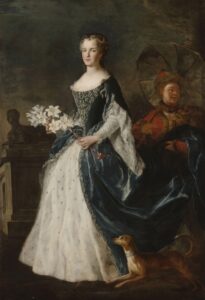
The dynastic ‘business of the century’
Easter Monday on 2 April 1725 was a turning point in the history of the Leszczyński family. Returning from a hunt, the exiled King of Poland received a long-awaited letter from Versailles. He broke the seal, opened the envelope, and began to read the message, expecting that, after a long struggle, supported by the leading plotter at the French court, the marriage of his daughter would finally be approved. Expectations were very high, as the candidate for her hand in marriage was Prince Louis Henri de Bourbon himself, great-grandson of the Great Condé, from a side branch of the royal family, but very wealthy as well. It did not bother anyone that, on the occasion of a dramatic financial crisis, the Prince had multiplied his fortune from the misery of others, nor did it matter that the chosen one, who was eleven years older than Marie, was ugly and, what is more, one-eyed and hunchbacked. After all, he was a dream match as a Bourbon.
Opening the envelope from the Prince that morning, Stanisław Leszczyński could only fear that the desired candidate would refuse. Accustomed to the vicissitudes of fortune, the King of Poland read the letter and gave in to his emotions: he fainted. The Duke of Bourbon did indeed refuse. He gave way to a more prominent contender for the hand of the Princess Marie.
Popular at the time, the story of King Leszczyński’s fainting has a no less colourful continuation. Having arrived at his modest residence, the King was to have entered the chamber where his wife and daughter were staying, and ordered them to fall to their knees and thank God for the abundance of His graces. Marie was then to ask if her father had finally been called to the throne of the Polish-Lithuanian Commonwealth, to which he was to reply that heaven had been even more gracious in making Marie Queen of France.
The news of the intended wife of Louis XV, the most brilliant catch in Europe, astonished contemporaries, who, seeing the disproportion in political and financial status, hailed the effect of the Leszczyńskis’ matrimonial endeavours as the ‘business of the century’. However, the influence of the Polish royal family on Louis XV’s decision was only indirect. Such a stunning finale was decided by national interest and skilful court intrigue.
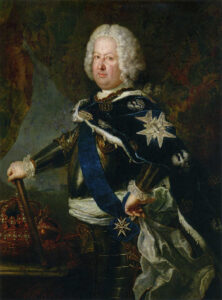
Competition for the Queen of France
It so happened that a keen interest in the matter of the search for a husband for the Polish Princess, and the Leszczyńskis’ hopes for the Prince of Bourbon, was taken by the influential Madame de Prie, very familiar with court games. Naturally, she was the first plotter at Versailles, controlling everything that happened at court, but she was also… the mistress of the Prince who was about to marry Leszczyńska. The matter was delicate; in order for Marie to marry the Prince of Bourbon, she had to make a deal with his influential mistress.
The latter acted with her usual shrewdness. She entered into direct correspondence with her father Stanisław, in which she took a keen interest in Marie’s fate, deceiving the father about the great attraction that the Prince of Bourbon purportedly felt towards his daughter. She did not reject Stanisław’s efforts, nor did she intend to share her rich and influential lover with the poor but young and attractive Princess.
Leszczyński awaited the Prince’s decision in Wissembourg while at Versailles, Madame de Prie and her Bourbon lover, under her control, were scheming like a pair of clever matchmakers about how to take advantage of the great opportunity before them, in the shape of the royal daughter. Surely she would be able to show her gratitude if they married her well!
Ambition and intrigue would not have sufficed, however, had it not been for a change in the balance of power at the French court. In mid-February 1723, Louis XV reached the age of thirteen, thus coming of age according to the law of the day, and taking over the reins of government. Until then, the state and the King’s personal life had been managed by the aforementioned Regent, Duke Philippe II of Orléans. In the event of the heirless death of the ailing Louis, according to the immutable principles of the Salic law, succession to the throne passed to the Orléans line, and specifically to the Regent’s son, Louis, Duke of Orléans. Little wonder then that, citing the interests of the state, the underage Louis XV was betrothed to the barely three-year-old Spanish Infanta Maria Anna Victoria. The King’s sickliness and the many years of waiting for the Spanish bride to reach maturity, and be able to give the King male offspring, followed by another dozen years before the dauphin reached adulthood and ensured the continuation of the reign of the Bourbon line – all this enormously increased the chances of the Orléans line taking the French throne.
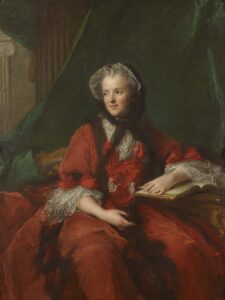
Louis XV’s assumption of personal rule did not change much, as the Duke of Orléans continued to have an overwhelming influence on him. In late 1723, however, the former Regent suddenly died, and his political successor was the Prince of Bourbon, the Leszczyńskis’ dream candidate for Marie’s hand in marriage. It was he who could now influence the royal conjugal future, and he was in a great hurry in this matter, as the lack of a male heir and Louis XV’s infirmity threatened to extinguish the old Bourbon line on the French throne, with the spectre of serving the despised Orléans family becoming a tangible possibility.
Hence the idea of marrying off the King as soon as possible to a mature woman who would quickly provide him with offspring. In the spring of 1724, Louis XV’s engagement to a Spanish Infanta of several years was broken off. The Prince of Bourbon then commissioned Count Charles Fleuriau de Morville, in charge of foreign affairs, to prepare one of the most interesting documents in the sphere of European dynastic politics: a list of potential candidates for a wife for Louis XV.
It was a type of competition, not to say casting, for a wife for the King of France. The list consisted of one hundred princesses. Brief comments on age, religion and origin were written next to each of the candidates. Next, the Royal Council began the selection and first rejected all those princesses who were either too young or too old, of inadequate origin, or politically inconvenient. Marie Leszczyńska did not stand out except for her ideal age, and was rejected in the first selection round along with 83 other ladies.
On 31 March 1725, further candidates were taken into consideration under the guidance of Louis XV. There were no clear favourites, and successive names were being dropped. In the face of indecision, on the initiative of the Prince of Bourbon, his would-be fiancée was again included in the selection. The young king was also offered a portrait of the Polish Princess, commissioned earlier by Madame de Prie, and painted by Pierre Gobert (1662–1744). Louis XV liked the portrait’s charm, and decided to take her as his wife.
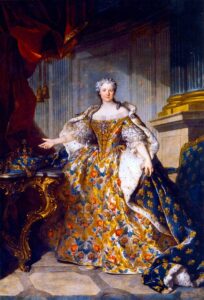
A grandmother of kings with a dowry in Lorraine
A few days later, the Prince of Bourbon sent two trusted royal doctors on a secret mission to Wissembourg. They carried out a detailed medical examination of Marie Leszczyńska, stating in their report the excellent state of health of the Polish Princess, and praising the regularity of her female indispositions. There was no doubt that the prime asset of the future Queen were her procreative capabilities. As it later turned out, she was spectacularly successful in this matter. Above all, what we appreciate today in the age of flourishing genetics, not being related to Louis XV, she greatly strengthened the Bourbon dynasty in biological terms. She gave France ten royal children, including two much-anticipated male descendants. She was also the grandmother of Kings Louis XVI, Louis XVIII, and Charles X. Marie Leszczyńska’s maternal achievements strengthened the French superpower, protecting the country from the succession wars plaguing Europe at the time, brought about by the extinction of old monarchical families.
Naturally, the marriage of Louis XV and Marie Leszczyńska was part of the foreign policy of the Bourbon monarchy, providing France with important political capital. Marie brought her father’s claim to the Polish throne as her dowry, owing to which Versailles gained a strong bargaining chip in its eastern policy. This was exploited after the death of August II Wettin, when France aided Stanisław Leszczyński in his struggle for the Polish crown. In 1733, he was elected King of Poland by the nobility for the second time. The unfavourable geopolitical situation, especially the hostile policies of Russia, Prussia and Austria, soon deprived him of power in the Polish-Lithuanian Commonwealth, but, as a result of what is known as the War of the Polish Succession (1733–1735), Leszczyński became Duke of Lorraine. Following his death in 1766, the duchy was inherited by his daughter Marie, who brought it to France as a belated but generous bequest.
Author: Maciej Forycki
Translation: Alicja Rose & Jessica Sirotin

